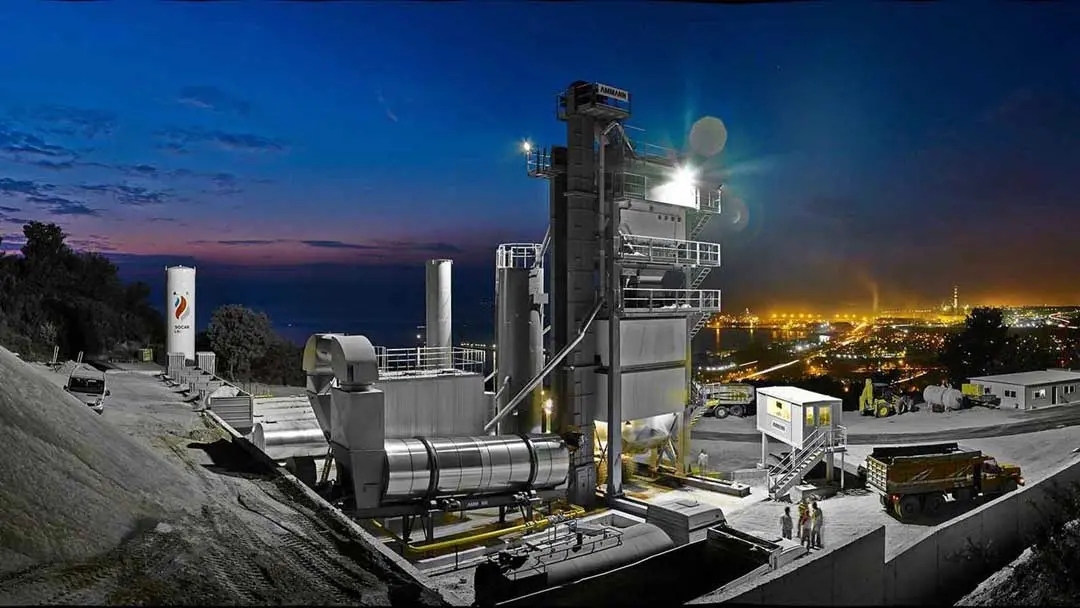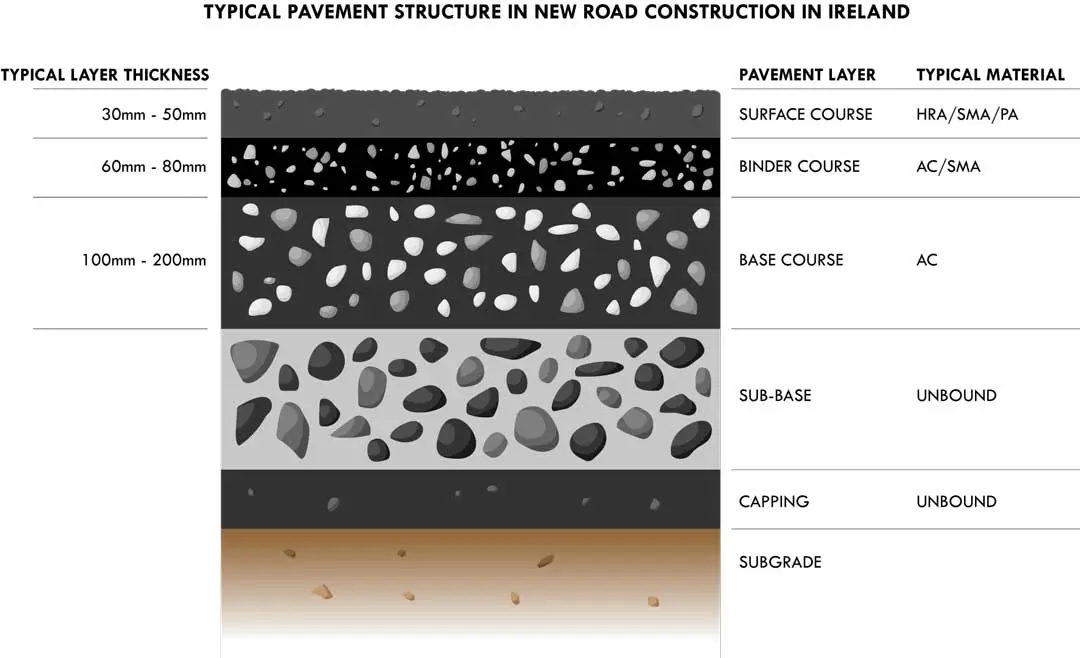What is Asphalt
Asphalt is the collective term used to cover a range of bituminous mixtures, which are widely used in Ireland in the structural and surface layers of all classifications of roads. It is also used in airfields, industrial areas, carparks, footpaths, cycleways, playgrounds, and sports areas. It is the most commonly used pavement material in the construction and maintenance of roads around the world.
Asphalt Production
Bituminous mixtures are produced in asphalt plants which combine the constituent materials, aggregates, filler and binder, in carefully measured proportions to meet specified requirements for each type of mix. The aggregates are usually crushed rock, sand or gravel and the binder is normally bitumen. These are brought together in the mixing plant at elevated temperatures to produce the cohesive hot bituminous mixture which is then spread by paving machines in pre-designed layer thicknesses to form the final pavement structure.
Range of hot Bituminous Mixtures commonly used in Ireland
The following bituminous mixtures are produced in our members’ plants in accordance with I.S. EN 13108 Parts 1, 4, 5, 7 and 8 and NSAI Standard Recommendation (SR) 28:
- Part 1: Asphalt Concrete (AC)
- Part 4: Hot Rolled Asphalt (HRA)
- Part 5: Stone Mastic Asphalt (SMA)
- Part 7: Porous Asphalt (PA)
- Part 8: Reclaimed Asphalt (RA) [RAP Enabled Plants]



Asphalt mixtures can be produced at different temperatures
Hot Mix Asphalt (HMA)
Hot asphalt mixes are generally produced at a temperature between 150 and 180 °C. Depending on the usage, a different asphalt mixture can be used
Warm Mix Asphalt (WMA)
A typical WMA is produced at a temperature around 20 - 40 °C lower than an equivalent Hot Mix Asphalt. Less energy is involved and, during the paving operations, the temperature in the mix is lower, resulting in improved working conditions for the crew and an earlier opening of the road.
Learn more about Warm Mix at https://eapa.org/warm-mix-asphalt

Typical pavement structure in new road construction in Ireland
An average asphalt pavement consists of the road structure above the formation level which includes unbound and bituminous-bound materials. This gives the pavement the ability to distribute the loads of the traffic before it arrives at the formation level. Normally, pavements are constructed in different layers and the typical products used in each layer are set out below:

The choice of the surface course depends on the functional requirements of the road surface. This could be high durability, noise reduction, splash- and spray reduction, a high skid resistance, impermeability, etc.
Learn more about Asphalt at https://eapa.org/what-is-asphalt